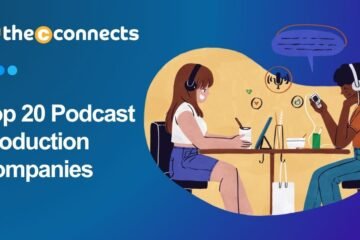- 1. Introduction to Creativity
- 2. Understanding the Nature of Creativity
- 3. Barriers to Creativity
- 4. Techniques to Unlock Your Hidden Creative Genius
- 5. Creative Habits and Routines
- 6. Tools and Practices to Enhance Creativity
- 7. Inspiration Sources for Creativity
- 8. Overcoming Creative Blocks
- 9. Case Studies and Real-Life Examples
- 10. The Connection Between Creativity and Personal Growth
- 11. Measuring and Sustaining Creativity
- 12. Conclusion
1. Introduction to Creativity
Creativity is the ability to think outside conventional boundaries, form new ideas, and find innovative solutions. It’s often associated with art and invention, but its reach extends into every field, including science, business, and education. Creativity empowers individuals to approach challenges with fresh perspectives and is the driving force behind progress.
Despite its importance, many hold misconceptions about creativity, believing it to be an innate trait reserved for a select few. This is far from the truth. Creativity is a skill that anyone can develop with practice and the right mindset. Unlocking creativity is essential not just for innovation but for personal growth and problem-solving in a rapidly changing world.
2. Understanding the Nature of Creativity
To unlock creativity, it’s important to understand its essence and how it functions in the brain. Creativity involves two key types of thinking:
- Divergent Thinking: Generating many different ideas or possibilities.
- Convergent Thinking: Narrowing down those ideas to find the best solution.
These processes involve complex neural networks. For example, the default mode network in the brain becomes active during daydreaming, which often leads to creative insights. Similarly, the prefrontal cortex, responsible for decision-making and focus, plays a role in refining those ideas.
Creativity is also influenced by emotions, intuition, and environment. Positive emotions like joy and curiosity tend to enhance creativity, while stress or fear may hinder it. Intuition—the ability to make decisions based on feelings rather than logic—often sparks creative breakthroughs.
3. Barriers to Creativity
While creativity is accessible to everyone, several barriers can impede its flow:
- Fear of Failure: The pressure to succeed discourages experimentation, a key component of creativity.
- Perfectionism: A fixation on achieving perfect outcomes stifles spontaneous ideas.
- Social Constraints: Cultural norms and peer pressure may suppress unconventional thinking.
- Cognitive Biases: Preconceived notions can limit our ability to think openly.
Addressing these barriers is the first step in unlocking your hidden creative genius.
4. Techniques to Unlock Your Hidden Creative Genius
Building a Creative Environment
The environment you surround yourself with significantly influences your creativity. A well-organized, inspiring space fosters focus and imagination. Adding elements like natural light, vibrant colors, and artwork can enhance the creative atmosphere.
Practicing Divergent Thinking
Divergent thinking techniques, such as brainstorming, encourage the free flow of ideas. Writing down every thought without judgment or categorizing ideas visually through mind maps can help connect seemingly unrelated concepts.
The Power of Observation
Observation sharpens creativity by helping you notice patterns, anomalies, and details. Carrying a journal to jot down observations or ideas keeps your mind engaged and provides a reservoir of inspiration.
Leveraging Constraints
Paradoxically, limitations can enhance creativity. For instance, a limited budget might inspire unique problem-solving approaches. Using constraints as a challenge rather than a hindrance often leads to innovative solutions.
5. Creative Habits and Routines
Developing creativity isn’t about waiting for inspiration to strike; it’s about cultivating habits that encourage imaginative thinking. Creative geniuses like Albert Einstein, Maya Angelou, and Steve Jobs adhered to disciplined routines that created fertile ground for innovation.
Daily Rituals for Creativity
- Morning Pages:
A concept popularized by Julia Cameron in The Artist’s Way, this involves writing three pages of unfiltered thoughts each morning. This ritual clears mental clutter, encourages self-reflection, and often unveils hidden ideas. - Meditation and Mindfulness:
Regular mindfulness practice reduces stress and enhances focus, allowing creative thoughts to emerge naturally. Apps like Headspace and Calm can guide beginners in incorporating meditation into their routine. - Reading and Journaling:
Reading widely across genres stimulates intellectual curiosity. Pairing this with journaling helps document insights and creative breakthroughs.
Balancing Structure and Spontaneity
Creative success often hinges on balancing discipline with flexibility. Scheduling uninterrupted creative time ensures consistency, while leaving room for spontaneous exploration sparks unexpected ideas. For example, a painter might dedicate mornings to sketching but allow afternoons to explore new styles or mediums.
6. Tools and Practices to Enhance Creativity
There are numerous techniques and tools to amplify creativity, each tailored to different styles of thinking and problem-solving.
Cross-Disciplinary Learning
Learning from fields outside your expertise broadens your mental framework. For instance:
- A musician studying architecture might learn about harmony in design, influencing their compositions.
- A business leader delving into psychology may find innovative ways to motivate their team.
Specific Creativity Techniques
- Lateral Thinking:
A concept developed by Edward de Bono, lateral thinking involves approaching problems from unconventional angles. For example, questioning assumptions like “Why does this need to be done this way?” can open up innovative paths. - SCAMPER Model:
This brainstorming method encourages exploring new ideas by asking:- What can be substituted?
- Can things be combined?
- How can this be adapted or modified?
- What can be eliminated or reversed?
Leveraging Digital Tools
- Mind Mapping Apps: Tools like MindMeister and XMind help visualize complex ideas and their interconnections.
- Writing Assistants: Apps like Grammarly or Scrivener aid writers in organizing their thoughts.
- Design Tools: Canva, Adobe Spark, and Procreate provide platforms for visual storytelling.
7. Inspiration Sources for Creativity
Creative inspiration is all around us; tapping into it requires an open and curious mind.
Nature as Inspiration
The natural world offers countless lessons in design and functionality. Biomimicry, for instance, has led to innovations like Velcro (inspired by burdock burrs) and aerodynamic trains (modeled after kingfisher birds). Spending time outdoors can recharge the mind and ignite new ideas.
Art and Culture
Exposure to various art forms broadens our perspective. Watching a play, attending an art exhibition, or listening to a different genre of music can spark creative thinking. Diverse cultural practices, literature, and philosophies can challenge preconceived notions and inspire novel approaches.
Collaborative Creativity
Engaging with others often leads to unexpected synergies. For example, brainstorming sessions, team projects, or even casual conversations can provide fresh perspectives and fuel new ideas.
8. Overcoming Creative Blocks
Creative blocks are inevitable, but they’re not insurmountable. Recognizing and addressing them can reignite the flow of ideas.
Understanding Creative Blocks
Creative blocks can arise from various sources:
- Fear of Judgment: Worrying about others’ opinions stifles risk-taking.
- Fatigue: Physical or mental exhaustion hampers innovation.
- Overload: Too much information can overwhelm the creative process.
Proven Strategies to Overcome Blocks
- Change Your Environment:
Shifting locations—working from a park, a coffee shop, or even another room—can provide a fresh perspective. - Physical Activity:
Exercise boosts dopamine and enhances brain function, often leading to creative breakthroughs. Many renowned thinkers, such as Charles Darwin, incorporated walking into their daily routine. - Engage in Play:
Playful activities like doodling, puzzles, or games help the brain relax and think differently.
9. Case Studies and Real-Life Examples
Examining how others have unlocked their creative genius can provide valuable insights and inspiration.
Albert Einstein
Einstein’s groundbreaking theories were rooted in imaginative thought experiments, such as envisioning himself riding on a beam of light. His ability to think beyond conventional science demonstrates the power of creative thinking.
Frida Kahlo
Kahlo’s art drew from her personal struggles and cultural heritage, creating works that resonate universally. Despite her physical pain, she turned to painting as a means of expression, illustrating how adversity can fuel creativity.
Companies Embracing Creativity
- Pixar Animation Studios:
Pixar fosters creativity by encouraging employees to share ideas freely, collaborate across departments, and iterate tirelessly. Films like Toy Story and Inside Out reflect this culture of innovation. - IDEO:
Known for pioneering design thinking, IDEO emphasizes empathy, experimentation, and team diversity in solving problems.
10. The Connection Between Creativity and Personal Growth
Creativity isn’t just a tool for professional success; it’s a path to personal enrichment.
Enhanced Problem-Solving Skills
Creativity enables you to approach challenges with flexibility, think critically, and adapt to changing circumstances. This is invaluable in both personal and professional contexts.
Improved Mental Well-Being
Engaging in creative activities reduces stress, enhances mood, and provides a sense of purpose. For example, journaling about gratitude or painting can act as therapeutic outlets.
Increased Confidence and Resilience
Each creative achievement, no matter how small, builds confidence. Over time, these successes develop resilience, equipping individuals to tackle bigger challenges.
11. Measuring and Sustaining Creativity
Tracking Progress
Keeping a record of creative ideas, projects, and achievements allows you to measure growth. For instance, maintaining an “idea journal” helps track patterns and sparks inspiration when revisited.
Celebrating Success
Acknowledging milestones—whether completing a painting, solving a problem, or generating a breakthrough idea—reinforces positive habits and fuels motivation.
Evolving Your Creative Process
As your skills and interests evolve, so should your creative methods. Experimenting with new tools, learning new techniques, or exploring unfamiliar domains ensures continued growth and prevents stagnation.
12. Conclusion
Creativity is a skill that lies within everyone, waiting to be unlocked. By understanding its nature, cultivating habits, overcoming barriers, and embracing inspiration from the world around us, we can unleash our hidden creative potential. Whether you’re an artist, scientist, or entrepreneur, creativity can enrich every aspect of life. It’s not merely about producing something new—it’s about seeing the world with fresh eyes and engaging with it meaningfully. Creativity, when nurtured, transforms not only our work but also our very selves.



